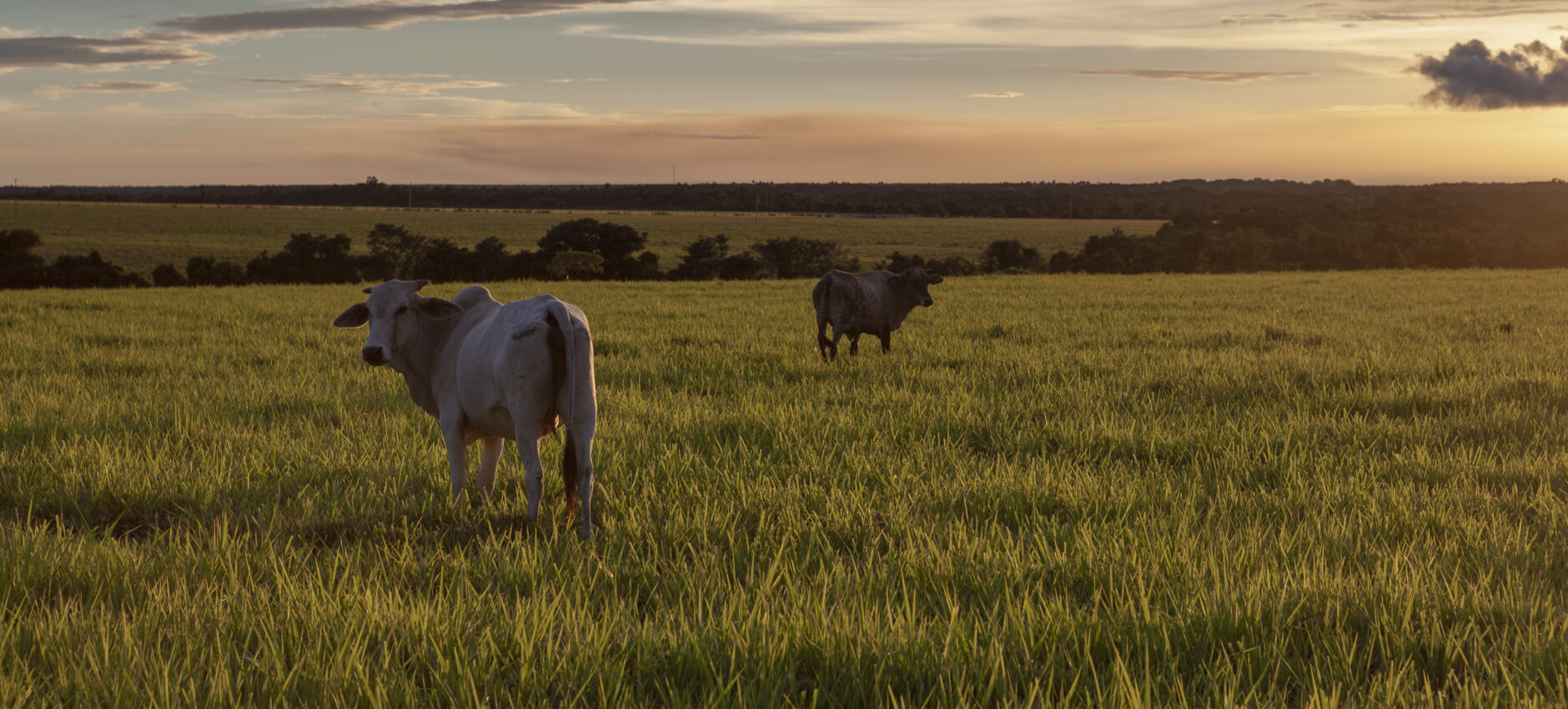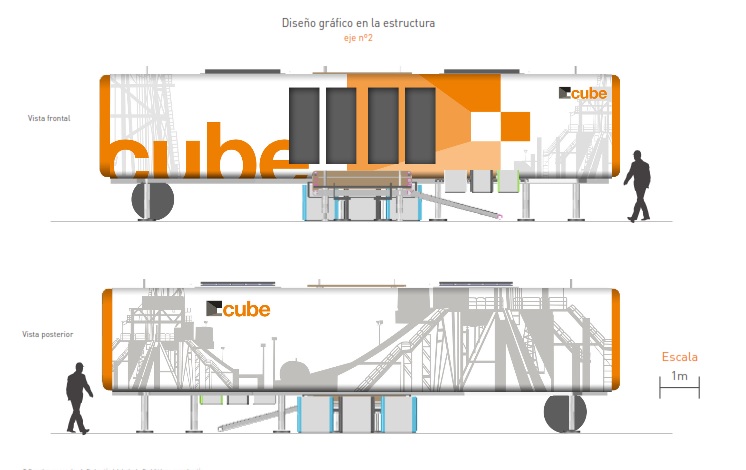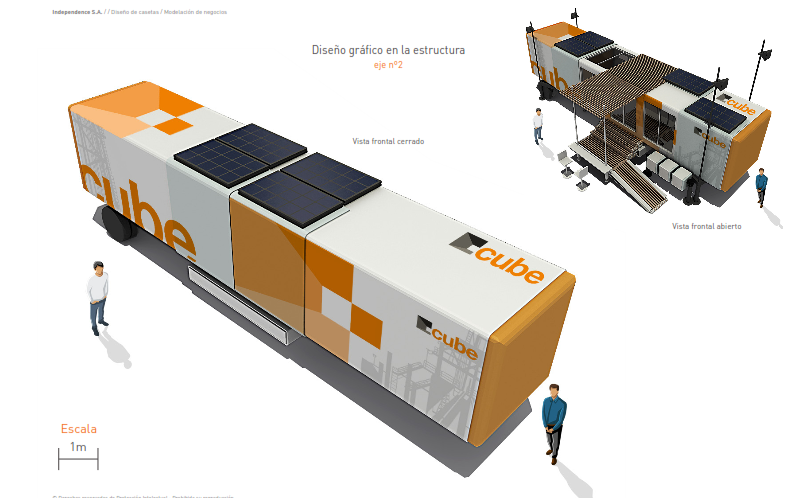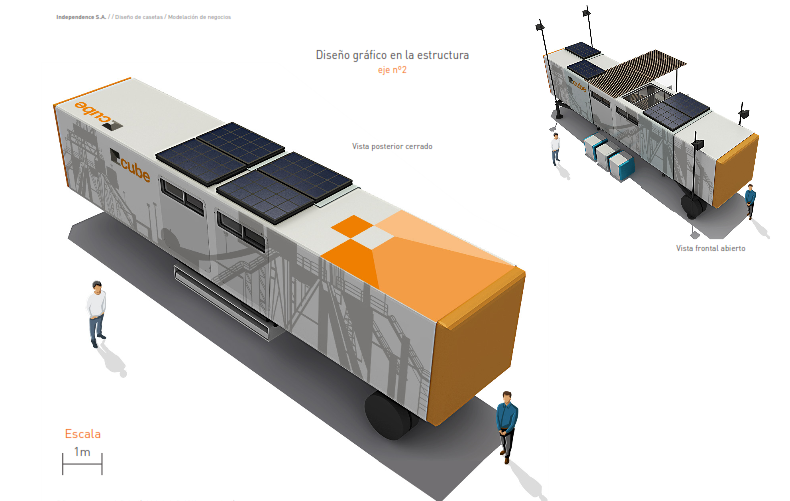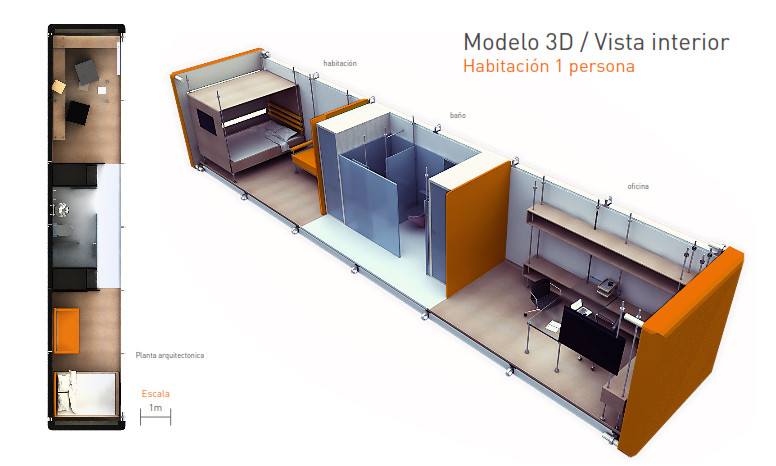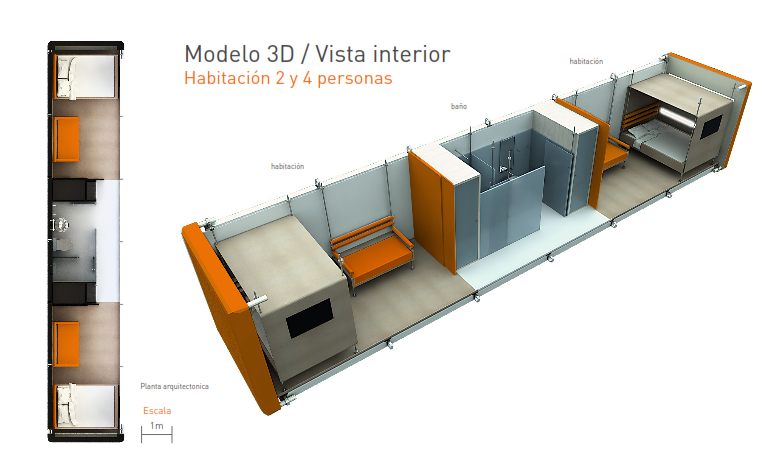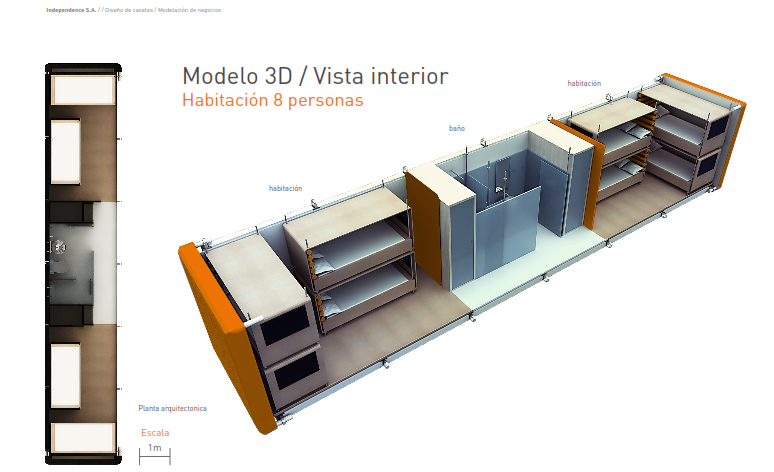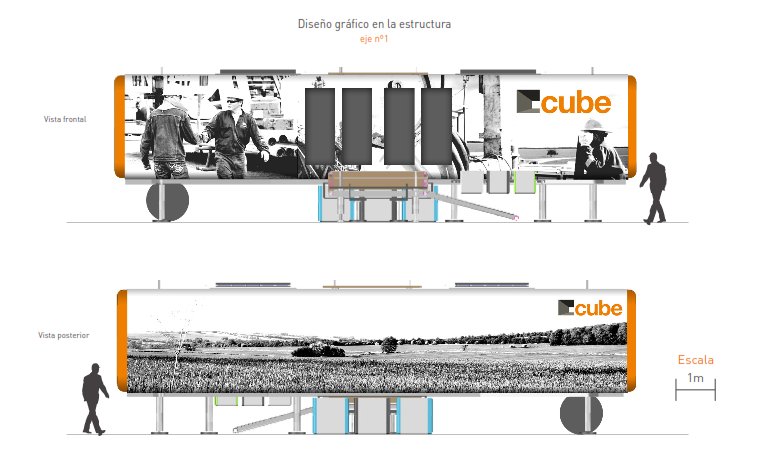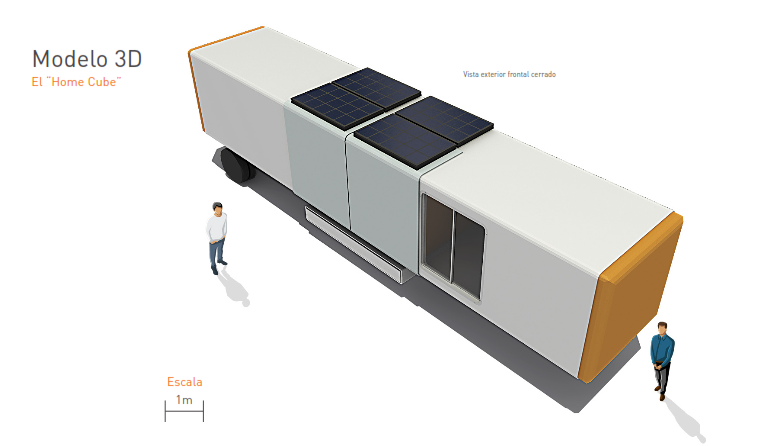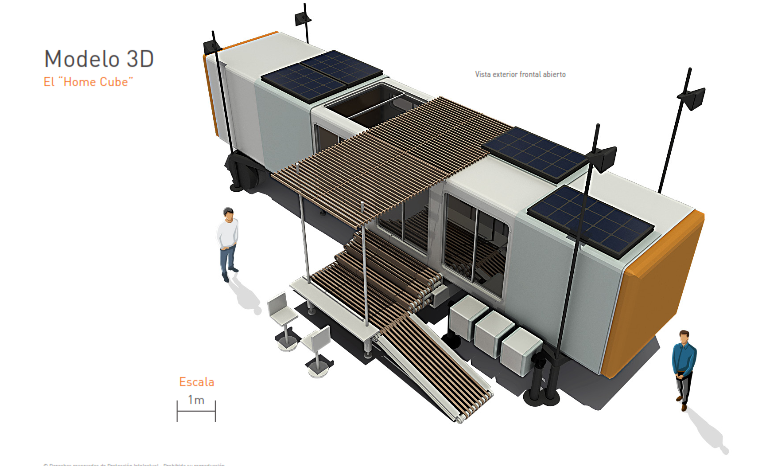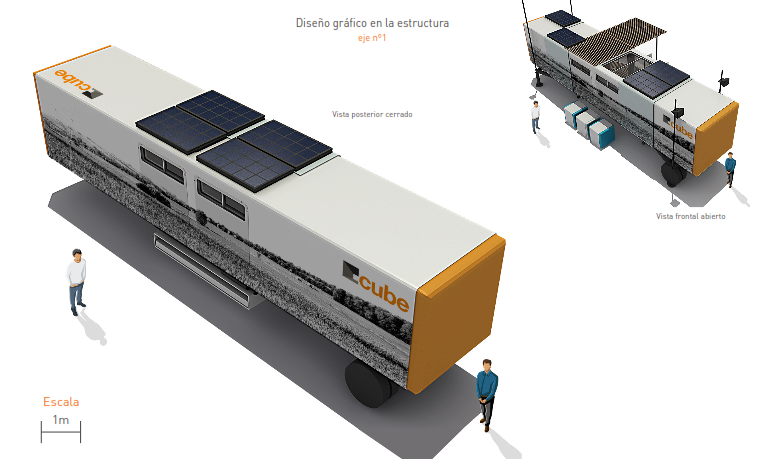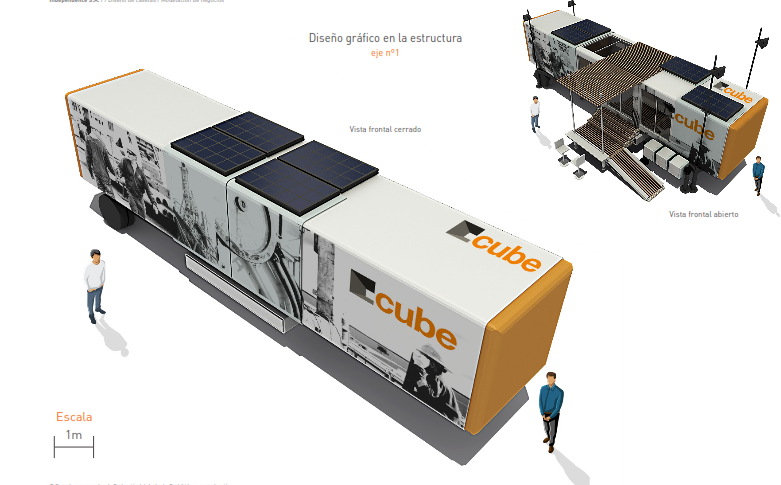Architecture and Interior Design
Home Cube
CONCEPT
Designing a series of modern and functional modules that are easy to install in oil exploration fields.
CHALLENGE
Abandoning the idea of prebuilt camps, by proposing spatial solutions that are functional yet enjoyable.
DESCRIPTION
In November of 2012 the petroleum logistic and infrastructure company Independence Drilling invited us to design a temporary house and draft a business plan for its development, minding typical deployment conditions in an oil field. One of the main aims was to replace the then current housing design system for camps, looking for more comfortable spaces and features and a familiar atmosphere, that would nonetheless be cost-efficient.
In December of 2012 once the team was presented and approved by Independence Drilling, a meeting took place where a brainstorm or Design Challenge was sketched between the client, its strategic allies and the four design teams shortlisted, with the aim to contextualize the design project and establish the set of rules of the competition for all four teams.
It is worth noting that Independence Drilling established the following design guidelines:
1.UNDERSTAND that the workers’ life on the field is not pleasant.
2.OBSERVE AND BE EMPATHIC with the workers by analyzing their views (Including all the ranks) needs, and aspirations of the ideal workspace and resting space.
3.INTERPRET AND DEFINE DESIGN GUIDELINES by taking these opinions (knowing what happens, how it happens and why it happens), and synthesizing them with the users’ emotion and intellect, in order to conclude in a series of working guidelines, that give way to the steps of ideation and experimentation for the four teams in their respective proposals
We proposed a cabin, with the characteristics of a toy in its system assembly and appearance.
We wanted the project to be perceived as a “Big toy” made of functional lightweight parts, which gave the cabin a distinct personality.
This cabin-toy would be comprised of the following parts:
1.Framework or structure.
2.Large panels.
3.Small panels.
The type of panels would depend on whether they would be indoors or outdoors.
While wood was not regarded as a first choice of coating, we pursued a similar finish.
The proposed windows were curved, like the ones used on buses, and the exterior exhibited images related to the brand identity that gave a concurrently artistic and advertising functionality.


